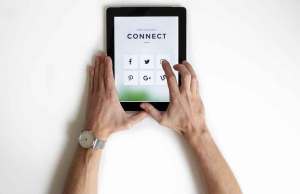We joke with one another about being addicted to our smartphones, eyes glued to whatever social platform we have pulled up at the time, but have you ever actually considered the possibility? Oftentimes, I reach for my phone and open Instagram or Snapchat without thinking twice or even realizing I’m doing it—and I have to tell myself, stop, snap out of it, put the phone down. You’re at work. You’re at the dinner table. You’re supposed to be spending time with your family.
Fortunately, I’ve become more mindful about my time spent on social media. But I’m not perfect. I do slip up, and I worry about the negative effects of social media on my health. Life Coach Marc Cordon, with a degree in neuroscience and certification in positive psychology, has taught a college course on happiness that specifically addresses all the trouble with social media—from social comparisons to depression and FOMO—and explains that it can certainly be addictive by delving into studies on Facebook:
“Several studies reported by the Washington Post and The Daily Dot point to Facebook usage affecting brain functioning associated with pleasure and even addiction. Receiving likes or comments results in a dopamine hit that results in a quick high,” he explains. “Though not as powerful as cocaine, the dopamine hit is the same as that found with cocaine, sex, and gambling, and it has the potential to be addictive.” However, you can protect yourself from falling into this downward spiral of social media addiction. Cordon suggests taking the following actions:
1) Limit push notifications.
Push notifications pop up on your screen to let you know that you have a message, like, comment, or mention on any given social media platform—and you’re notified right away. I’ve never been one to allow push notifications but that doesn’t mean my apps don’t remind me it’s an option every other time I sign on! If you have your push notifications turned on, consider turning them off. This will give you more control over how much time you’re spending on social media and when.
2) Limit accessibility during self-care work.
Now that you have those push notifications turned off, you can more easily manage your social media use, which is especially important during self-care work. When I say self-care work, I’m talking about any activity you do to take care of your mental and physical wellbeing. A few examples include meditation, writing down gratitudes, volunteering, or even just listening to music. Any time you’re employing one of these self-care practices, truly engage—don’t allow social media to become a distraction. If you have a hard time keeping your finger off those buttons, shut your phone off or keep it at a distance. Whatever it takes to tune into the important practice at hand!
3) Charge the phone outside of your bedroom.
Many of us include social media scrolling in our nightly routines, but nighttime is actually one of the worst times to engage online. The blue light emitted from our phones, laptops, and tablets are overstimulating and can cause you serious sleep issues. So, to break this harmful habit, try keeping your phone out of the bedroom at least right before bed. If you typically charge your phone on your bedside table while you sleep, move it to the living room or kitchen. I know your phone probably doubles as an alarm, but trust me: it’s worth investing in a (cheap) alarm clock to eliminate social media use from the bedroom.
4) Put a cap on social media time.
The past couple points have focused on cutting down on your social media time, whether you’re implementing self-care strategies or getting ready for bed—but if we’re being honest, you should limit your social media time on a daily basis. Start with the previous tips and then work on capping your overall social media time. This “cap” can vary from person to person, depending on lifestyle factors and current social media habits for example, but generally a good place to start is restricting your social media time to an hour or so a day. Try this, see how you feel, and then adjust accordingly to best benefit you.
5) Like actual people, places, and things by engaging in them.
And finally, instead of “liking” people, places, posts, and pictures with the click of a button, show your love and appreciation for them by spending real, valuable time engaging in them. Go on weekly dinner dates with your best friend (no smartphones allowed). Enjoy the time spent in Mexico, downtown, or in your own backyard, without pulling out your phone to snap a picture on Snapchat every second. Put real, meaningful time and energy into loving these people and these places, rather than merely expressing your fondness via the many social media platforms you have to choose from.













